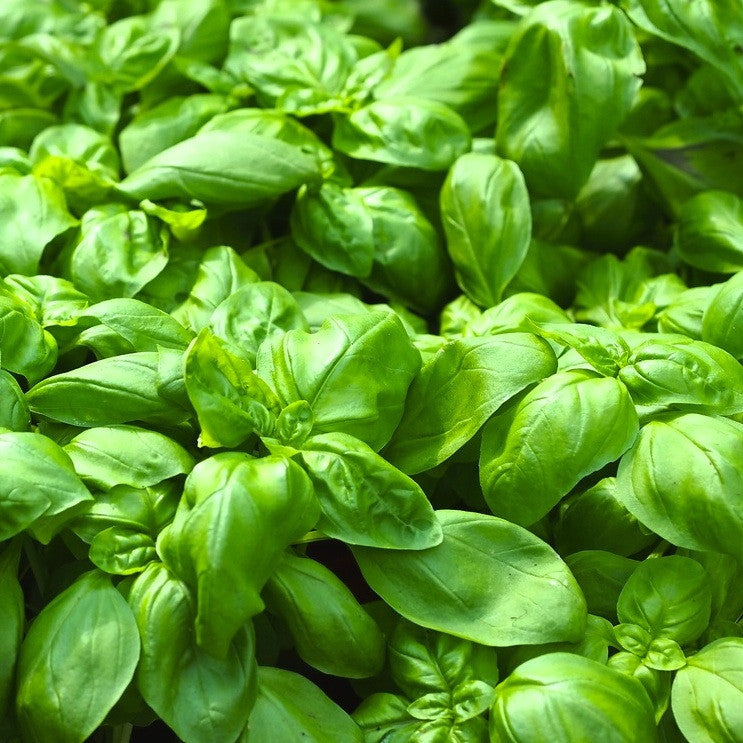TIMELESS Essential Oils
Basil, Sweet
Couldn't load pickup availability
Product Details
Sale : 20% Off
Botanical name : Ocimum basilicum
Aroma : Sweet, spicy, with balsamic woody undertone
Note : Top
Odor Intensity : 7
Key constituents : Methyl chavichol, Linalool, 1,8-Cineol, Eugenol
Extraction method / Source : Steam distillation / leaves
Plant description : Botanical family: Laminaceae or Labiatae (mint)
Sweet Basil is an annual herb that grows to 24 inches in height. It produces large, fragrant, dark green leaves and soft white/purple flowers. Also referred to as Common Basil.
Regions of Production : India, Madagascar
Growing Practices : Grown without chemical fertilizers or pesticides
We guarantee the purity and quality of all our therapeutic oils. Current Certificate of Analysis is available upon request.
History / Fun Facts : The name Basil comes from the Greek word basileum, meaning "king". In the 19th century, Italian women wore sprigs of basil to attract suitors. Sweet Basil has long been used as favorite culinary herb. Sweet Basil essential oil can also be used in cooking and baking.
Properties / Uses
Properties : Analgesic, antidepressant, antiseptic, antispasmodic, carminative, cephalic, digestive, emmenagogue, expectorant, febrifuge, nervine, sudorific. (Battaglia, 2003, Schnaubelt, 1998)
Fragrant influences : Helps reduce mental fatigue and dizziness, sharpens the senses.
Uses / Benefits : Helps relieve migraine headaches, sore throat, insect bites, itchy skin.
Modes of Administration : Topical: massage, compress, skin care.
Inhalation: direct inhalation, diffuser, oil vaporizer, aromatherapy inhaler
Blends well with : Bergamot, Black Pepper, Cedarwood, Clary Sage, Coriander, Cypress, Fennel, Geranium, Ginger, Grapefruit, Jasmine, Juniper, Lemon, Mandarin, Sweet Orange, Palmarosa, Pine, Rosemary, Sage, Tangerine, Tea Tree
All essential oils are best stored in an airtight container away from heat and light.
Safety
Do not use if pregnant or nursing. Avoid if epileptic. May irritate sensitive skin. (Battaglia, 2003)
Notice : This information is for educational purposes only. It has not been evaluated by the US Food and Drug Administration. It is not intended to diagnose, treat, cure or prevent any condition or disease and should not take the place of evaluation by a qualified health professional. Although we strive to provide information which is accurate and up to date, we cannot guarantee the accuracy or completeness of this information.
Precautions
Pure essential oils are highly concentrated plant extracts. Do not use them undiluted, or in the eyes or mucus membranes. If applying an essential oil to the skin, always dilute it with a proper carrier oil and test on a small patch of skin before applying to a large area. Do not take them internally except under the direction of a qualified professional trained in Aromatherapy. Always familiarize yourself with the safety, contraindications and proper preparation of each essential oil before use. Note that when using essential oils for children and the elderly, very low concentrations should be used. Keep all essential oils away from children and pets.
References
Battaglia, Salvatore, The Complete Guide to Aromatherapy, Second Edition, 2003. The International Centre of Holistic Aromatherapy, Brisbane, Australia
Halpern, Georges M., M.D., Ph.D., Weverka, Peter, The Healing Trail: Essential Oils of Madagascar, 2003, Basic Health Publications, Inc., North Bergen, NJ.
Schnaubelt, Kurt, Advanced Aromatherapy: The Science of Essential Oil Therapy, (English translation)1998. Healing Arts Press, Rochester, VT.
Schnaubelt, Kurt, The Healing Intelligence of Essential Oils: The Science of Advanced Aromatherapy, 2011. Healing Arts Press, Rochester, VT. Worwood,
Valerie Ann, The Complete Book of Essential Oils & Aromatherapy, 1991. New World Library, Novato, California


